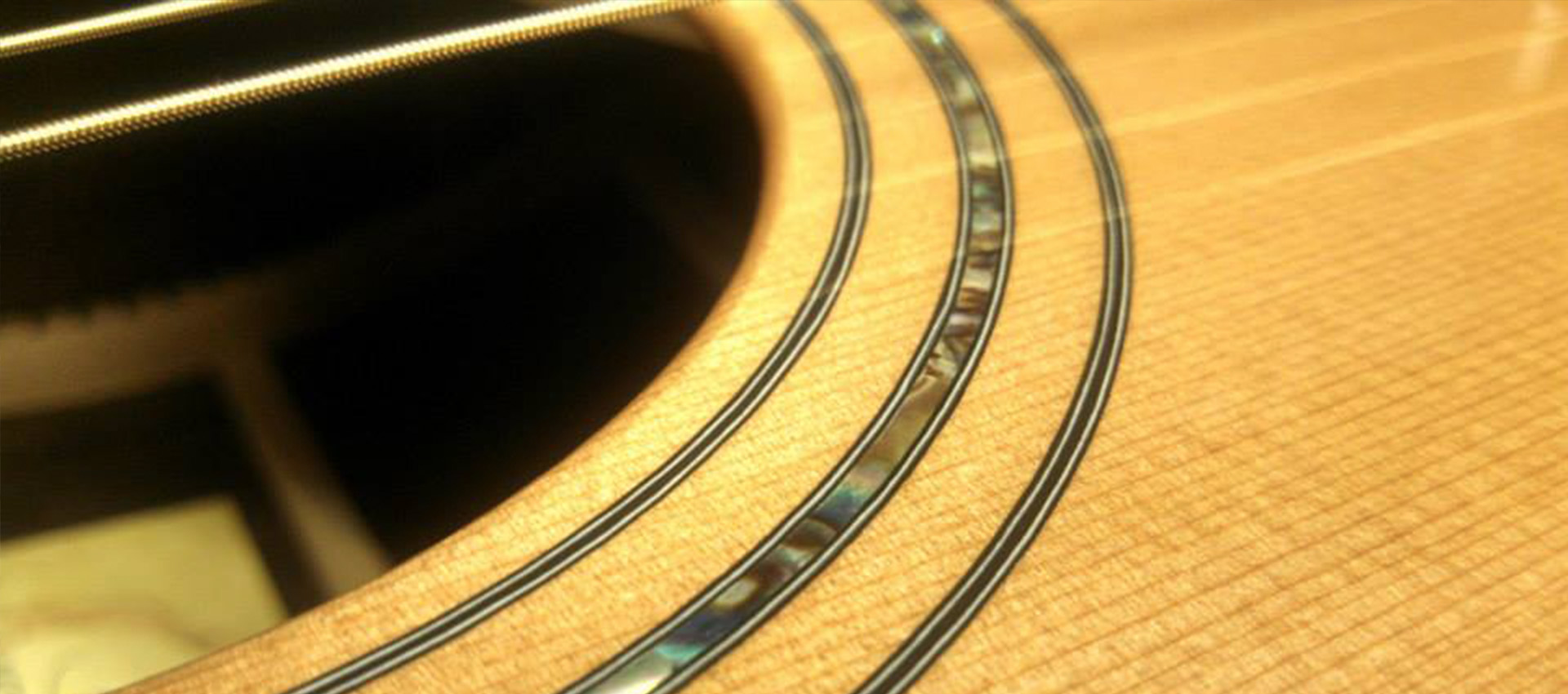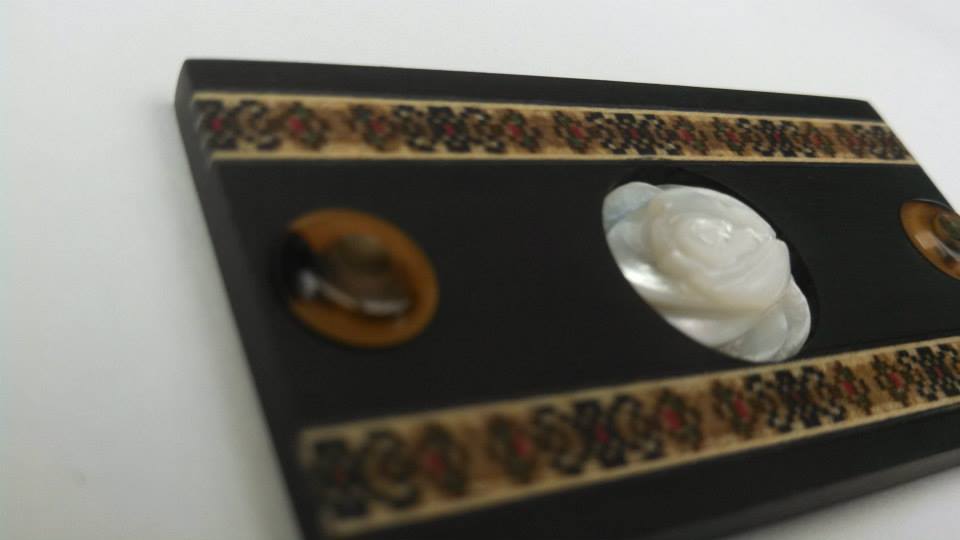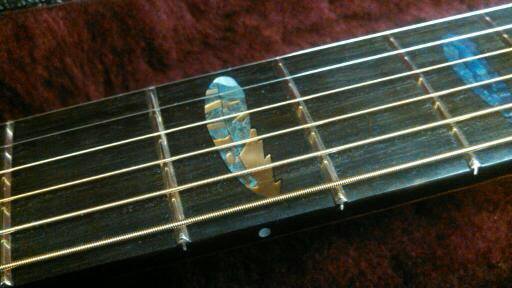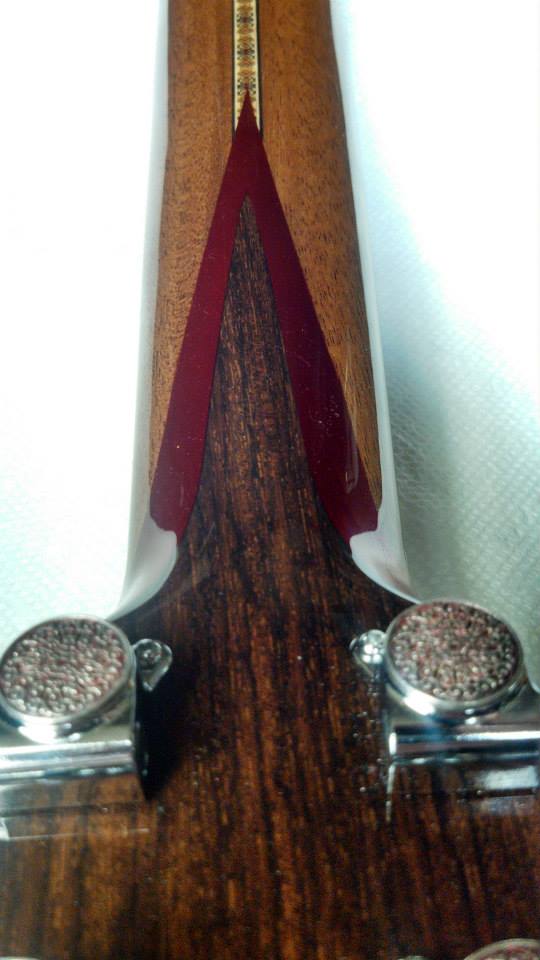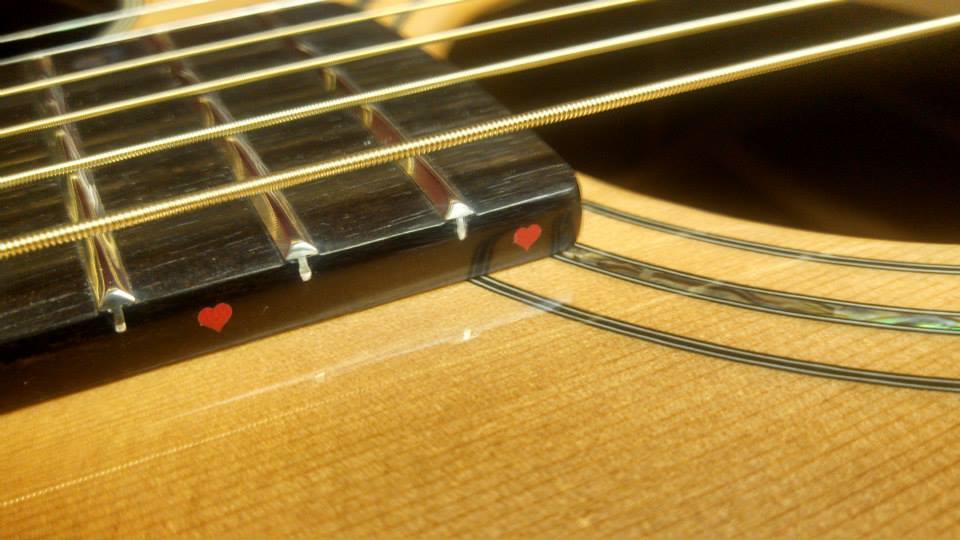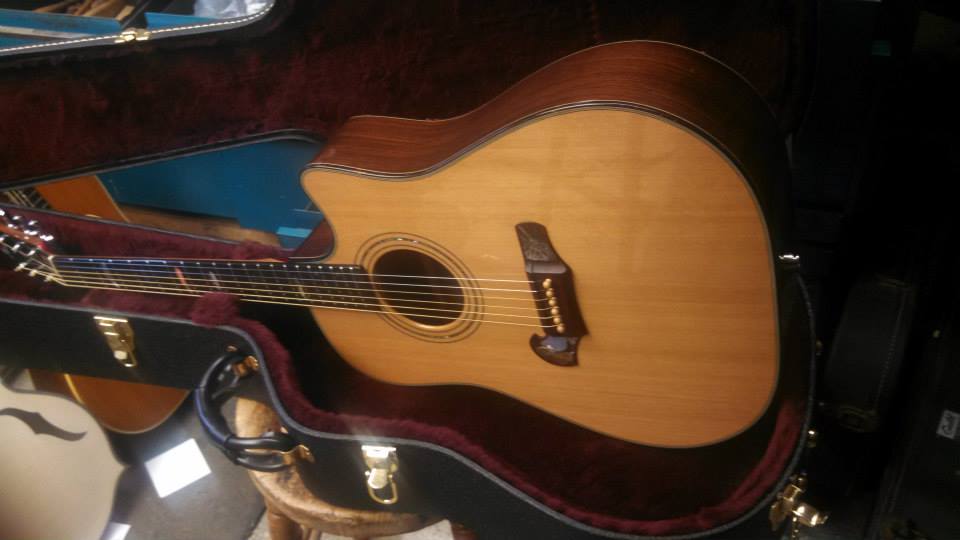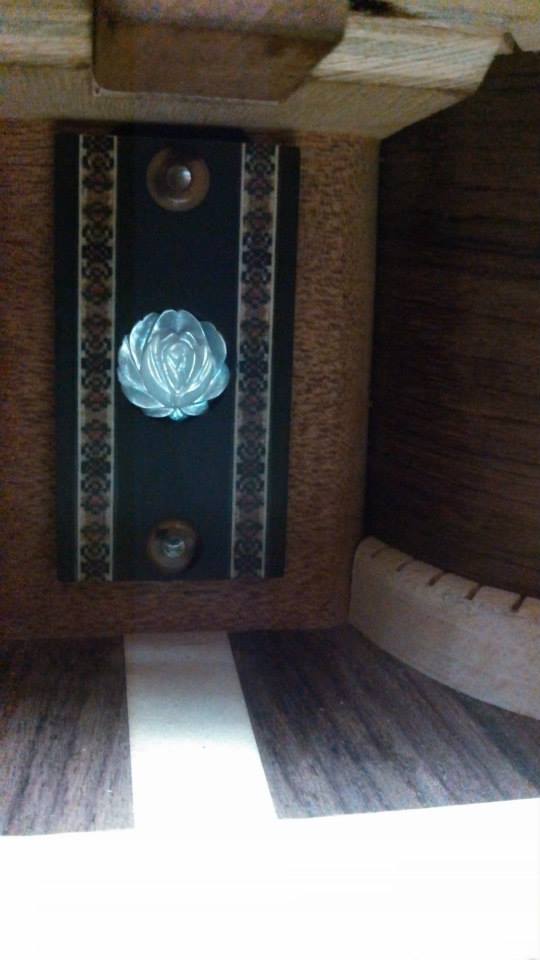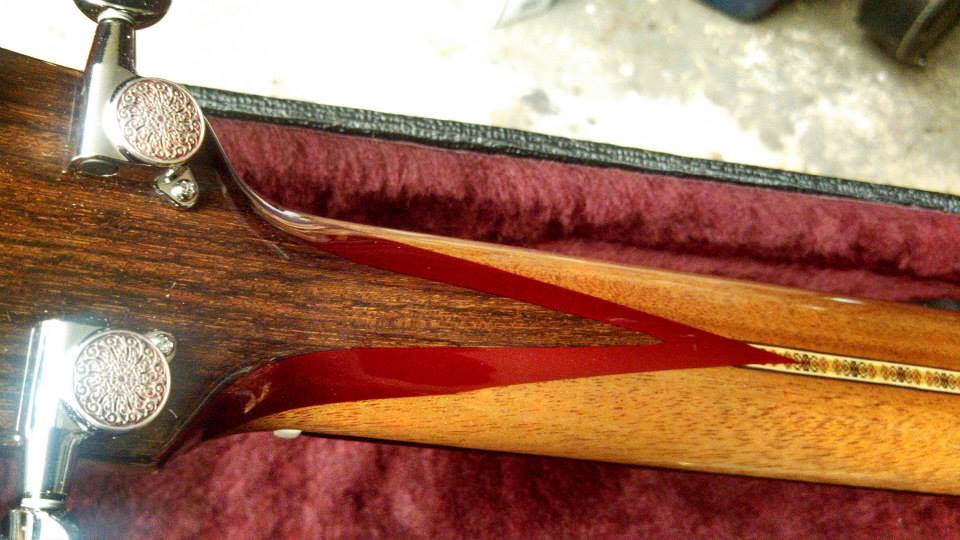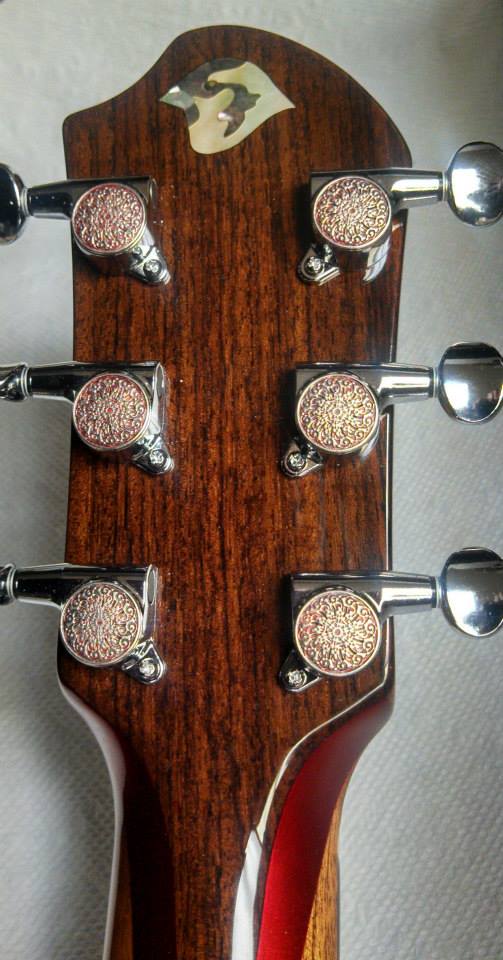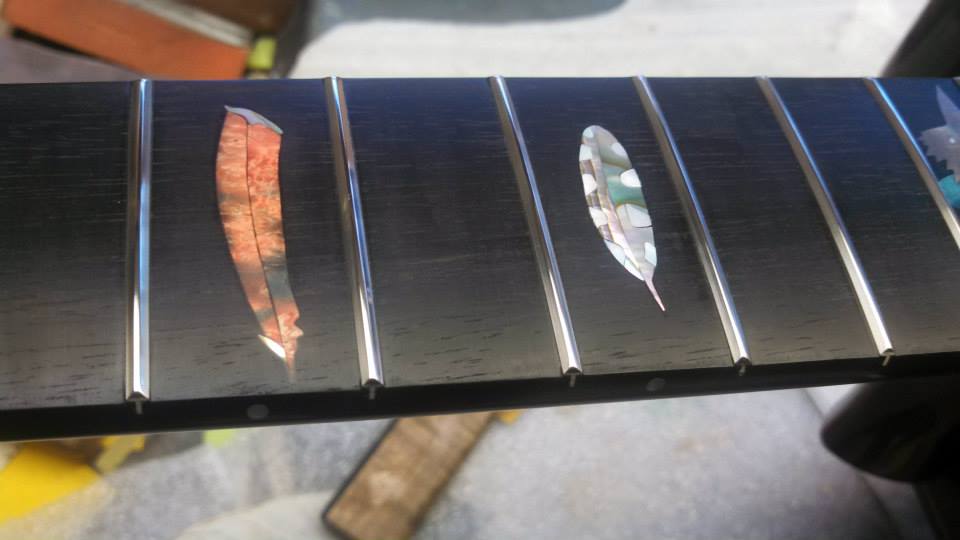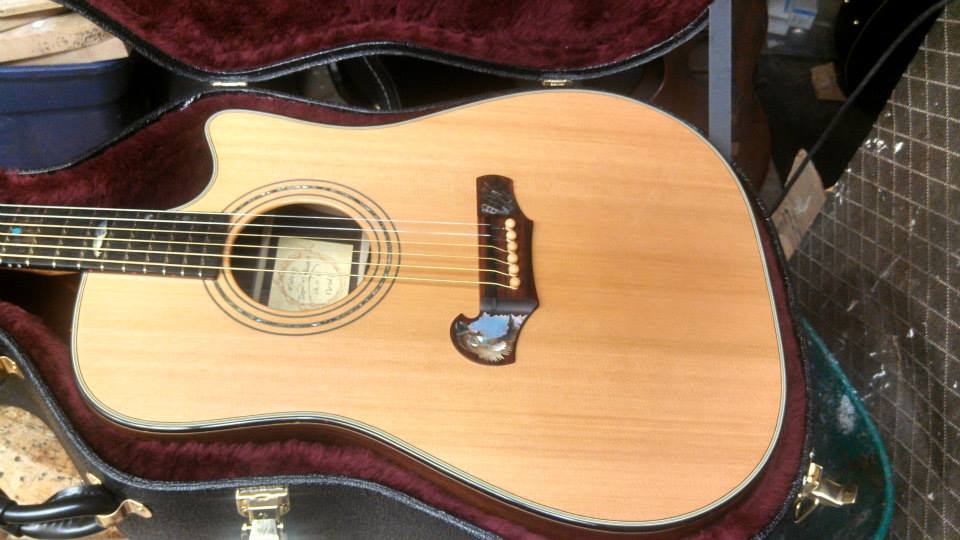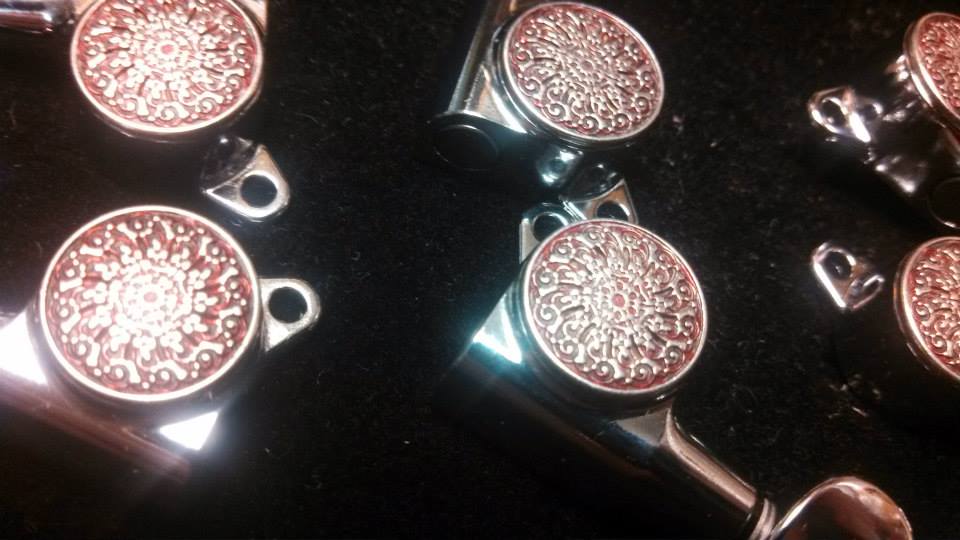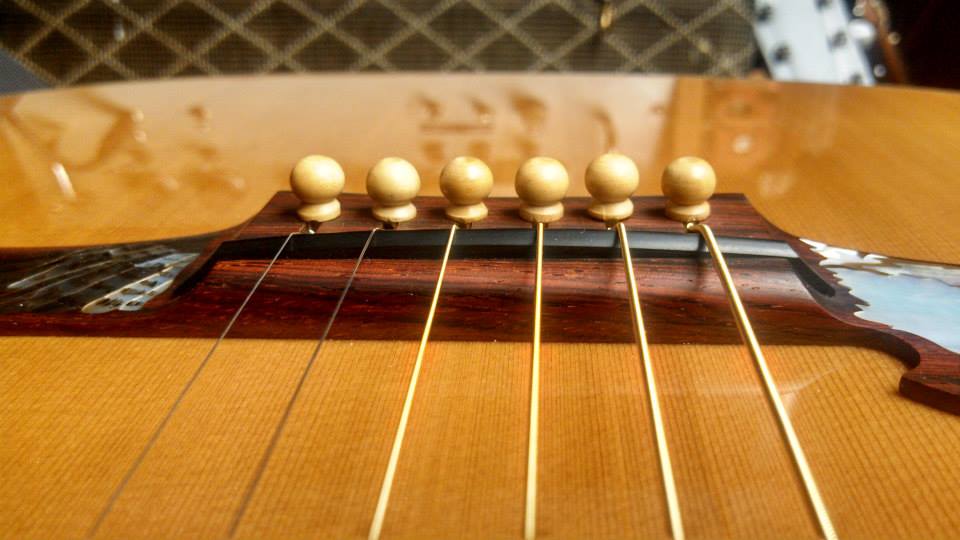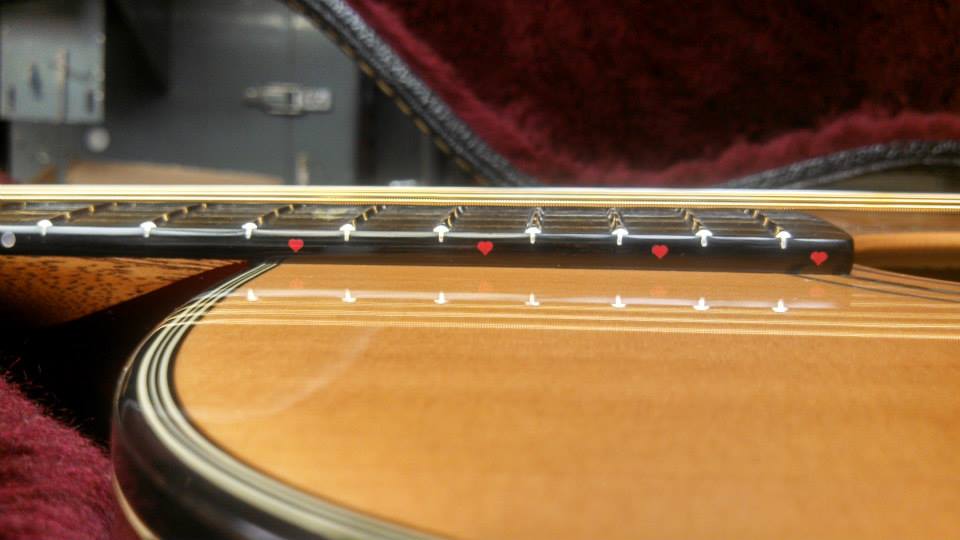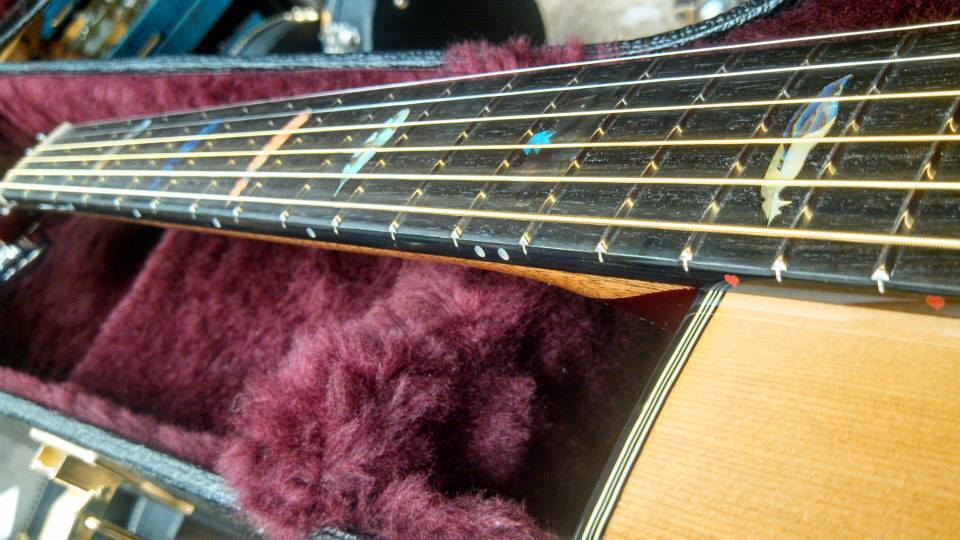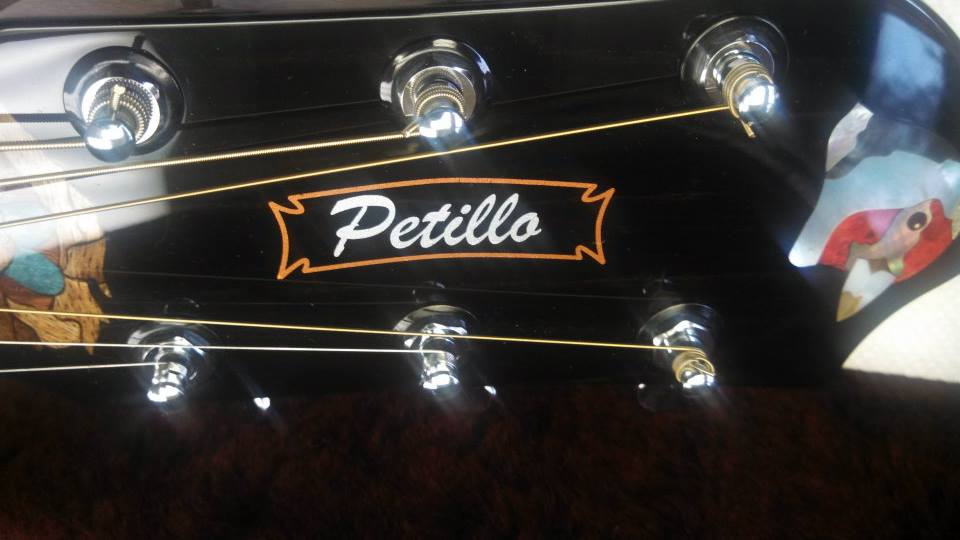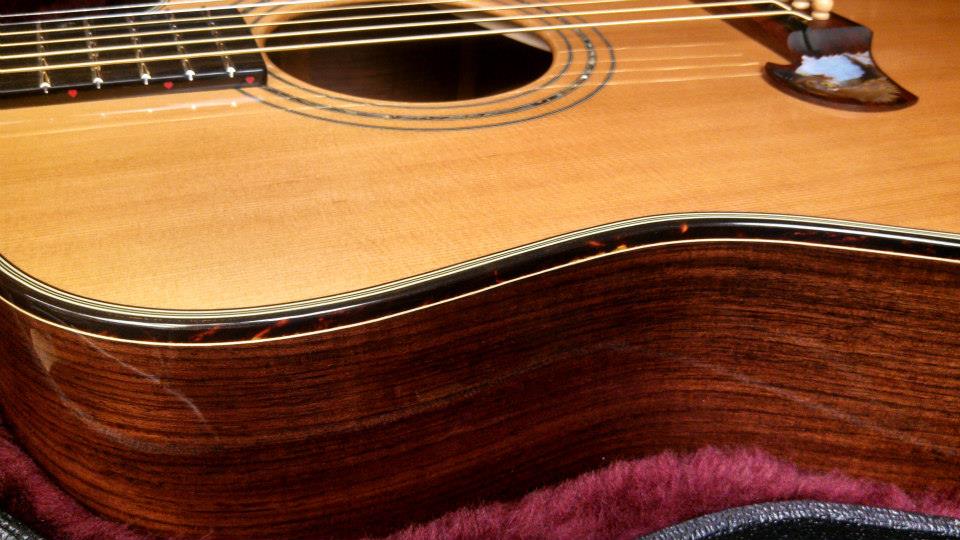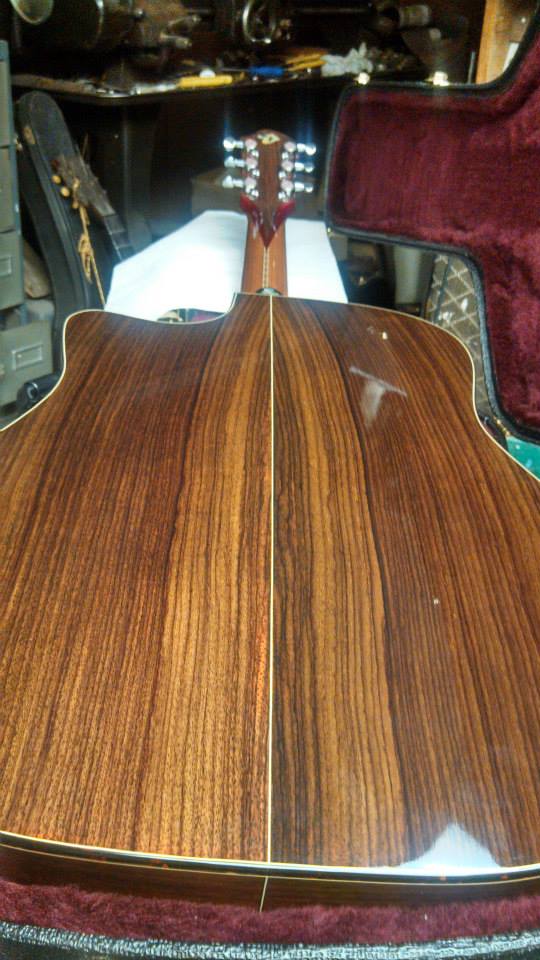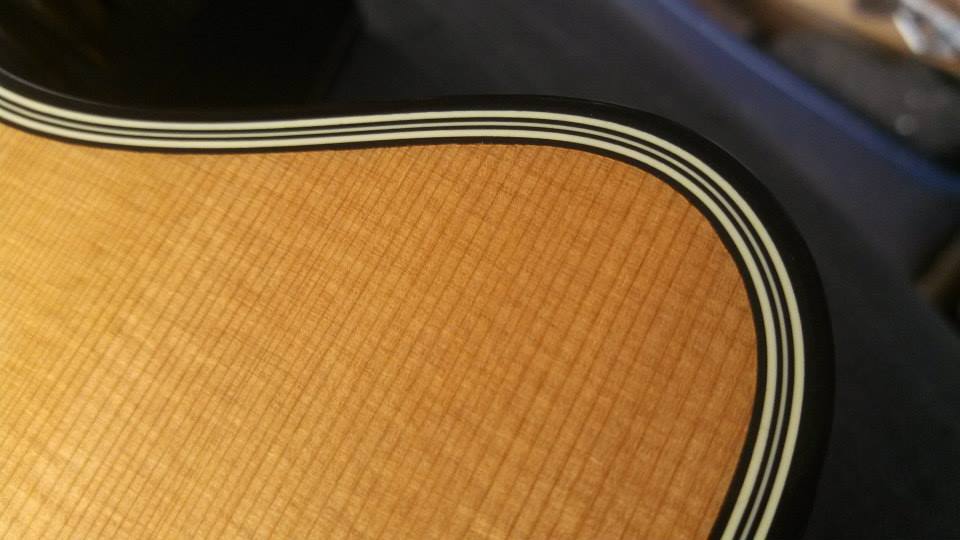This project took a long time based on materials. Over the years my Mother (Lucille Petillo) and Father (Dr. Phil Petillo) have accumulated many exotic one-of-a-kind materials to use on stringed instruments. This guitar has many of those exotic accents. The heart of the construction is the bracing pattern and its precision location for the proper flexibility of the top without restriction. This gives it a rich luster of tone. The other important factor is the neck tenon joint and two stainless steel machine screws and inserts which secure the neck very tight to the body, which allows pure transfer of sustain. In the future this can be removed if accidental damage should occur or if the player needs a different size neck due to arthritis or other hand problems. I made a neck plate door with a three dimension white rose to symbolize hope and love outlined by the same mosaic strip inlay I used on the back of the neck. The back and sides of this guitar are made of circa 1950’s dark Brazilian Rosewood, very similar to the same Brazilian used on old Gibson acoustics and Guild Starfire guitars. The binding is pieced-together tortoise shell. The joints of the binding were glued with a dyed epoxy to give the illusion that the binding was one continuous piece outlining the body shape of the guitar. The soundboard perimeter binding is six pieces of white German holly and Nigerian Ebony. The soundboard itself is 200 year old Spanish Cedar tinted a vintage golden amber. The soundhole rosette is standard German white holly, Nigerian Ebony and rainbow abalone. The fingerboard, heel cap and front headstock overlay are made of Nigerian Ebony. The back headstock overlay is made of dark Brazilian Rosewood and is a special technique my Father invented to restore broken headstocks by laminating a piece of wood the length of the headstock to about the fifth fret. Even thought this technique is used as a patch and added strength for cracks it can also be done on a healthy neck for added sustain and class in design. The dark Brazilian is highlighted by a red airbrushed frame to mimic the tail of a woodpecker or cardinal. Also, on the Amazon Mahogany neck is a strip inlay that has a wildlife type feel to match with the guitar. I burned the center of the strip with a small tip torch to add a natural shadow to the wildlife mosaic. The headstock is shaped like a bird’s head, a one-off design I conceived for this particular guitar. The inlay work has so much detail I can’t go into too much because this write up will be novel long. The inlaid materials used are: Tahitian grey pearl, rainbow abalone, green, blue and red stone, white mother of pearl, gold pearl, red abalone, blue coral, copper, sterling silver, spalted maple, Boars ivory and tortoise shell. The bridge on this guitar is made of a different grade orange grain Brazilian Rosewood in the shape of a perched osprey. The low side of the bridge has a large area for the bird’s head and an area for the palm to rest when muting the strings while finger picking. The tuning keys are Gotoh brand and they were chosen because the gear box on the back is easy to remove. I made custom circle plates for these with a pressed imprint design on the lathe then added finishing touches by hand. Also, the covers are dyed red with a metal paint to offset the airbrushed red bird tails. The nut is made of very old Wooly Mammoth ivory and the saddle is made of black phenolic, the same material my Father chose when designing Kramer guitars, but back in those days it was know as Ebonal. Phenolic was also used as part of the bridge plate because of its hard quality so when the strings are tuned to 440 pitch the ball underneath doesn’t wear into the bridge plate and cause damage. The bridge pins are made of petrified maple and were designed to be taller then normal pins for easy access and removal when changing strings. The final touch of finish is a nitro based lacquer to let the wood breathe and have an open overall sound. I hope you enjoy this piece, it really made my good friend Dave Butler’s holiday season.
Petillo Bird Guitar (Dreadnaught Cutaway Acoustic)
